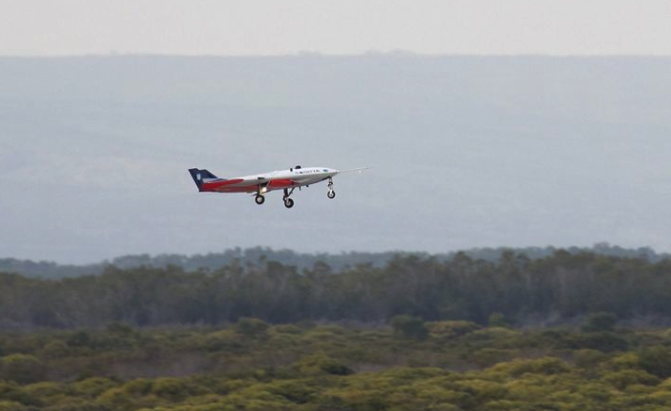Airbus Defence and Space has successfully tested a UAV demonstrator called SAGITTA, which completed an autonomous flight over a test site in Overberg, South Africa.
Airbus Defence and Space has successfully tested a demonstrator designed to pave the way for series production of future unmanned aerial vehicles (UAVs). The demonstrator, called SAGITTA, completed an autonomous flight lasting around seven minutes on a pre-programmed course over a test site in Overberg, South Africa.
The 1:4-scale vehicle, powered by two 300N turbojet engines, measures 3m x 3m and has a maximum take-off weight of 150kg. The airframe, which features stealth shaping, is produced completely from carbon fibre composite (CFC) using a number of new manufacturing processes.
With the exception of the brakes, it is an ‘electronic flying device’ that is controlled by electromechanical actuators instead of hydraulic components. Through the SAGITTA programme, Airbus DS and its development partners hope to gain important insights for new technologies in unmanned flight systems and to develop next-generation products to operational maturity.
According to Airbus DS, the flying-wing design demonstrated excellent flight characteristics during the test. This flight marked the successful completion of the first test phase, which also included extensive ground testing.
The demonstrator is the product of the ‘Open Innovation’ / SAGITTA national initiative launched by Airbus in 2010. The project involves collaboration between Airbus and institutes from the technical universities of Munich and Chemnitz, the University of the Federal Armed Forces (Universität der Bundeswehr) in Munich, the Ingolstadt University of Applied Sciences and the German Aerospace Centre DLR to jointly develop advanced technologies for unmanned flight. The project started with a feasibility study of the flying-wing configuration.
Criteria for the design included a high degree of autonomy, variable mission profiles and low levels of perceptibility. Airbus provided the industrial facilities required for integrating the technologies in the demonstrator at Airbus DS’s Military Air Systems Centre in Manching, Germany.

